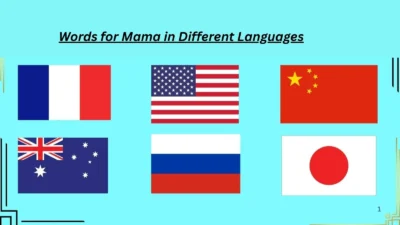When someone searches for “11 in different languages”, it usually means they are curious about how numbers are expressed around the world. This could be for learning purposes, travel, cultural understanding, or even for fun facts.
Numbers are one of the first things we learn in any new language, and knowing them can help in conversations, shopping, studies, or even decoding cultural meanings.
This article will not only show you how 11 is written and pronounced in different languages but also cover related searches like 12 in different languages, numbers 1–10, one in different languages, four in different languages,
ten in different languages, and numbers 1–20 in different languages. By the end, you’ll have a full list you can read, learn, and use when talking to anyone else.
Why Learn “11” and Numbers in Different Languages?
- Travel & Communication – Numbers help in buying tickets, shopping, or asking for directions.
- Language Learning – They’re the foundation for vocabulary building.
- Culture & Symbols – Many cultures attach meanings to numbers (like 11:11 in spirituality).
- Education & Fun – Kids and students often enjoy comparing how numbers sound in other tongues.
11 in Different Languages – Quick List
Here’s how eleven (11) is said in major languages:
- French – onze
- Spanish – once
- German – elf
- Italian – undici
- Portuguese – onze
- Russian – одиннадцать (odínnadtsat’)
- Arabic – أحد عشر (aḥada ʿashar)
- Chinese (Mandarin) – 十一 (shí yī)
- Japanese – 十一 (jū ichi)
- Korean – 열하나 (yeol-hana)
- Hindi – ग्यारह (gyaarah)
- Greek – έντεκα (éndeka)
- Turkish – on bir
- Swahili – kumi na moja
- Latin – undecim
12 in Different Languages
Since 12 often follows 11 in curiosity searches, here’s how it looks:
- French – douze
- Spanish – doce
- German – zwölf
- Italian – dodici
- Chinese – 十二 (shí èr)
- Hindi – बारह (baarah)
Numbers in Different Languages 1–10
Before 11 and 12, learners often want 1–10 as a base. Example (English → French → Spanish → German → Chinese):
1 – un / uno / eins / 一 (yī)
2 – deux / dos / zwei / 二 (èr)
3 – trois / tres / drei / 三 (sān)
4 – quatre / cuatro / vier / 四 (sì)
5 – cinq / cinco / fünf / 五 (wǔ)
6 – six / seis / sechs / 六 (liù)
7 – sept / siete / sieben / 七 (qī)
8 – huit / ocho / acht / 八 (bā)
9 – neuf / nueve / neun / 九 (jiǔ)
10 – dix / diez / zehn / 十 (shí)
20 in Different Languages
- French – vingt
- Spanish – veinte
- German – zwanzig
- Italian – venti
- Hindi – बीस (bees)
- Chinese – 二十 (èr shí)
One and Four in Different Languages
- One (1):
- French – un
- Spanish – uno
- German – eins
- Chinese – 一 (yī)
- Hindi – एक (ek)
- French – un
- Four (4):
- French – quatre
- Spanish – cuatro
- German – vier
- Chinese – 四 (sì)
- Hindi – चार (chaar)
- French – quatre
Numbers in Different Languages 1–20
Here’s a summary of 1–20 in French as an example:
un, deux, trois, quatre, cinq, six, sept, huit, neuf, dix, onze, douze, treize, quatorze, quinze, seize, dix-sept, dix-huit, dix-neuf, vingt.
Every language follows its own unique pattern, and comparing them helps in faster learning.
Conclusion
Searching for “11 in different languages” often begins with curiosity, but it opens the door to a whole world of language learning and cultural appreciation. From one to twenty, each number carries history, sound, and meaning. Whether you’re learning for school, travel, or fun, knowing numbers in different languages makes communication smoother and learning more enjoyable.



